Around 10 a.m. we reach the Von Lindeqist Gate at the eastern end of Etosha National Park. To the German blog. On our way to the entrance, we have already seen giraffes, dik-diks, which is the smallest antelope species, impalas and a large hyena.
This blog post contains unpaid advertisement. All I have written is my personal opinion. You´ll find affiliate links. If you buy a product through this link, you´ll not pay more, but I’ll get a small commission, that helps to go on with my blog.
What do you think we’ll see in the Etosha National Park?

Morning in Etosha National Park
Here, too, the terrible drought can easily be seen. All trees and shrubs look bare for me. Jörn, our driver guide shows us that individual trees get tiny green shoots. This is a good sign that there will probably be rainfall in this rainy season. Hopefully in a few weeks, in the Namibian summer, i.e. in our winter time, it will start.
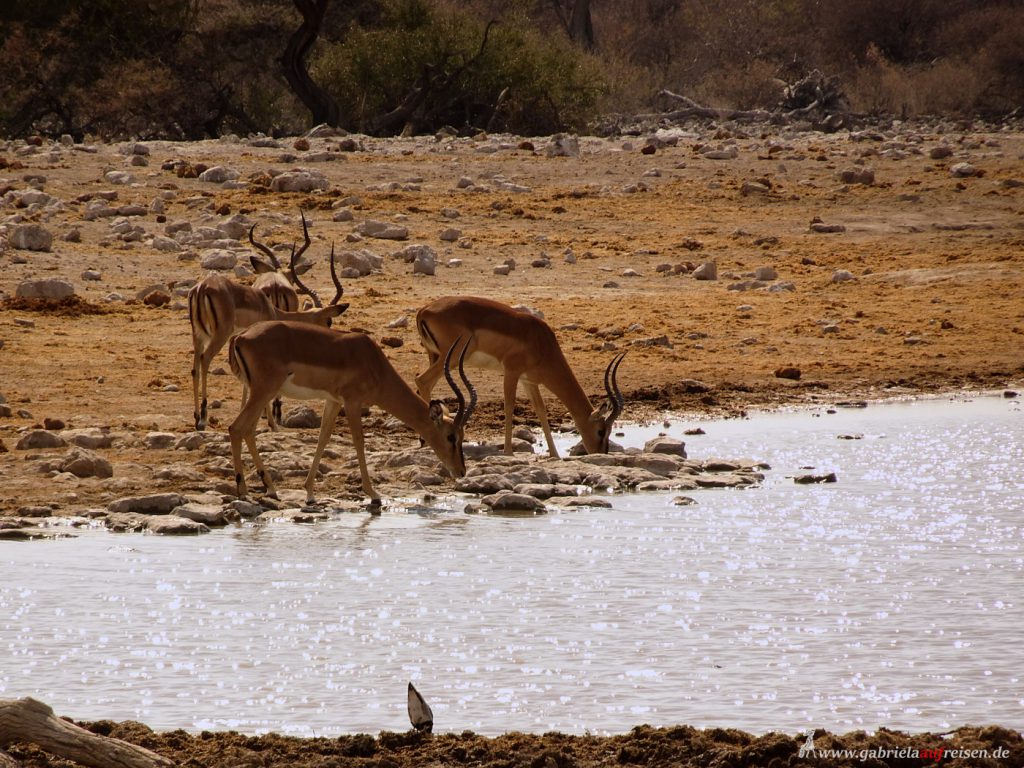
The gates of Etosha National Park open at sunrise and close at sunset. All vehicles are registered and have to leave the park with the same number of people in the evening. Unless you stay in one of the park’s lodges. Unfortunately, there are also poachers here, so e.g. the exact number of rhinos has not been disclosed. Some got their horns cut, but unfortunately like this they are lighter prey for the lions.
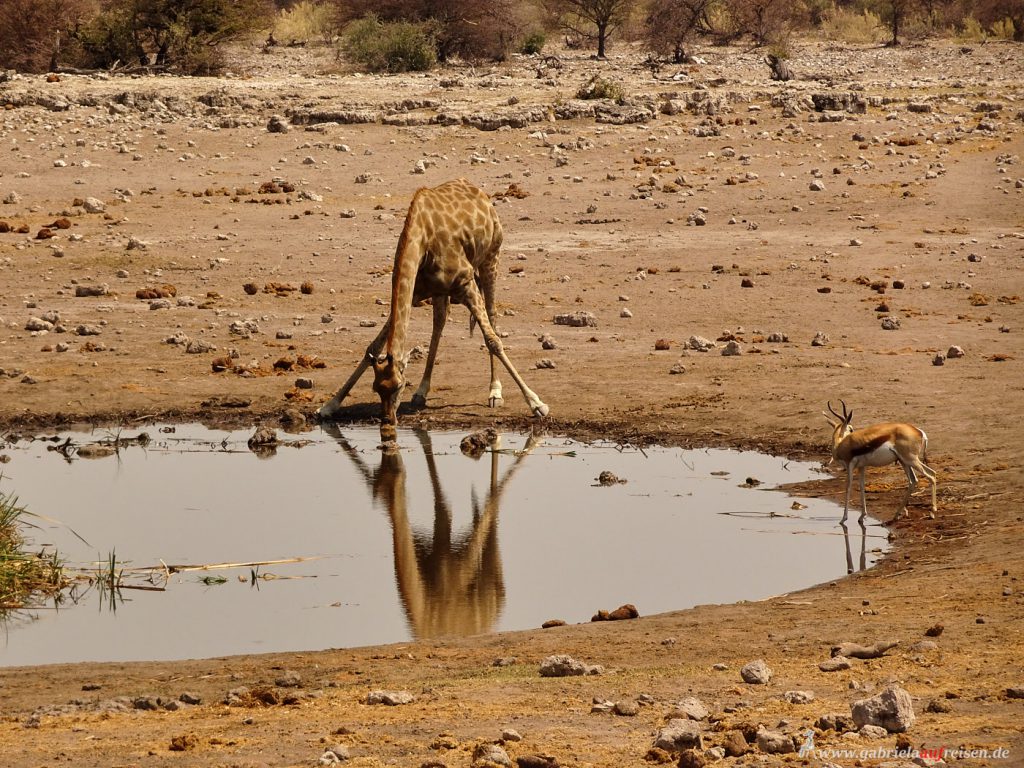
Jörn drives the various waterholes. Since most visitors drive directly at sunrise into the Etosha National Park, we arrive relatively late. We don’t have to wait at the gate and need not stay behind any other car.
The long drought, the worst in 90 years, stirs up an enormous amount of dust that whites the leafless trees and shrubs. There’s something unreal about it…
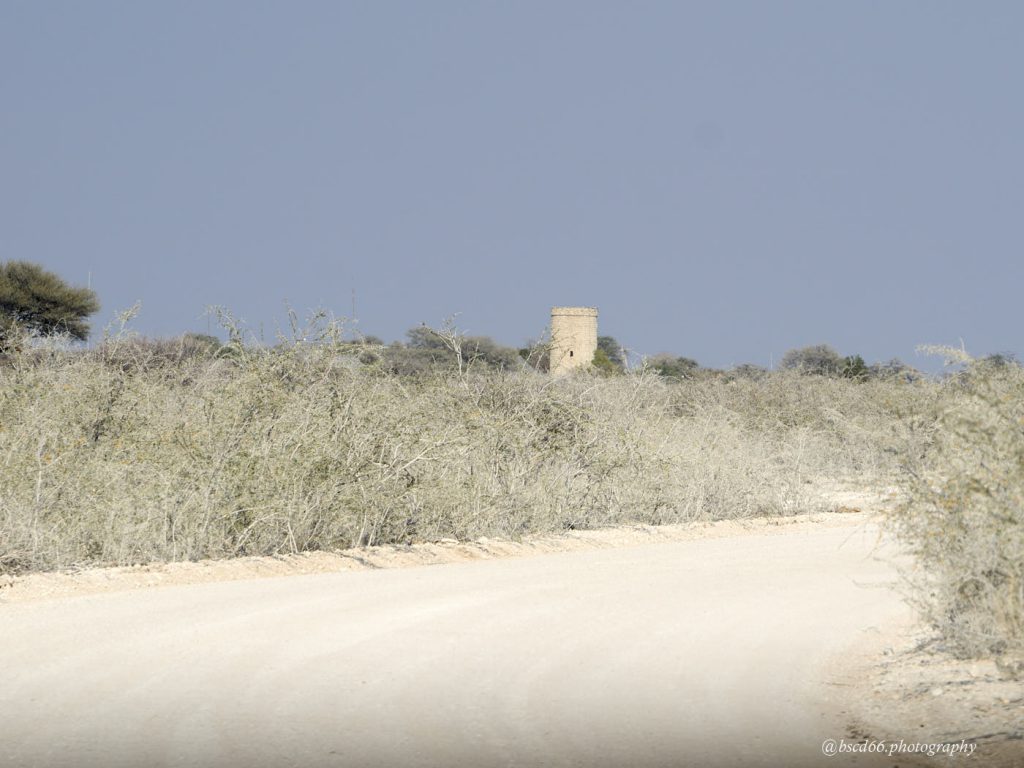
At the waterhole
Right at one of the first water holes we are greeted by a herd of elephants. A few calves play with each other and wrestle. At the waterhole some bachelors have gathered, who measure their powers. In the background observed by an older elephant bull. The male animals leave the herd after a few years and form bachelor associations, usually they get taught by experienced old bulls.
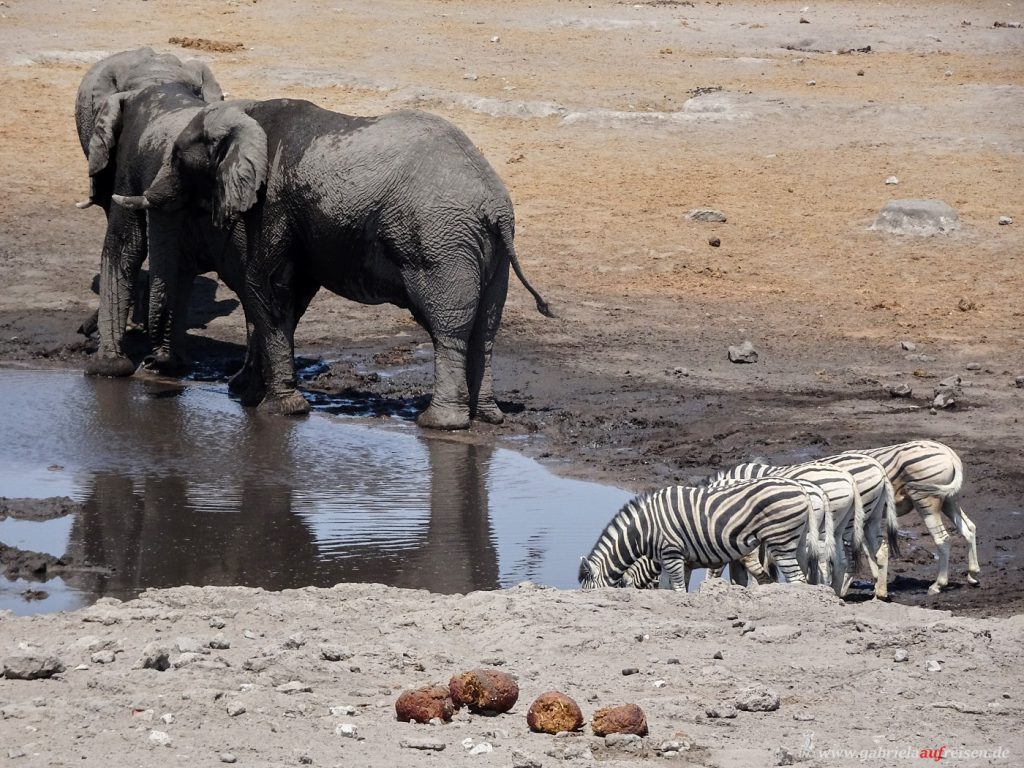
What we are all particularly pleased about, however, are two rhinos on the other side of the waterhole. They both look at each other from the side. Rhinos are more likely to be loners defending their territory.
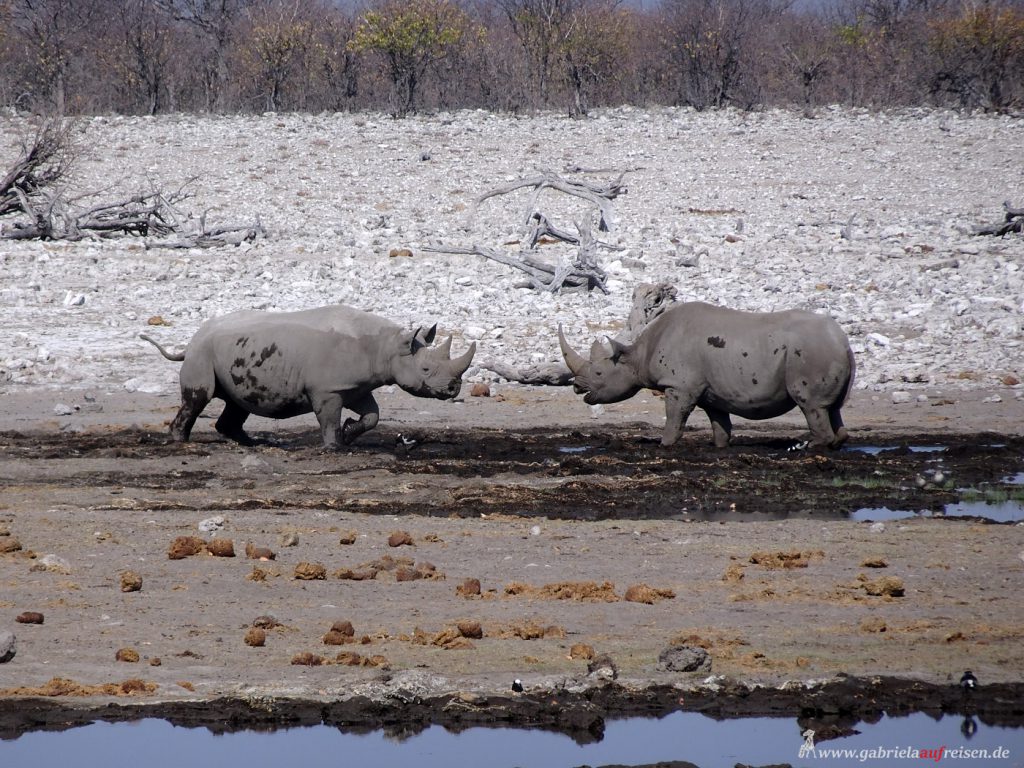
So, it is here! One moment they drink peacefully and the next moment a rhino attacks the other one. It’s all going to happen very quickly! One gets his horn under the neck of the other and already the underlay falls into the mud. He quickly rattles up and under snorting and grunts he leaves the scene of his defeat and trots to the different end of the waterhole. What a sight! To see one rhino is great, but two and fighting, that’s a real highlight.
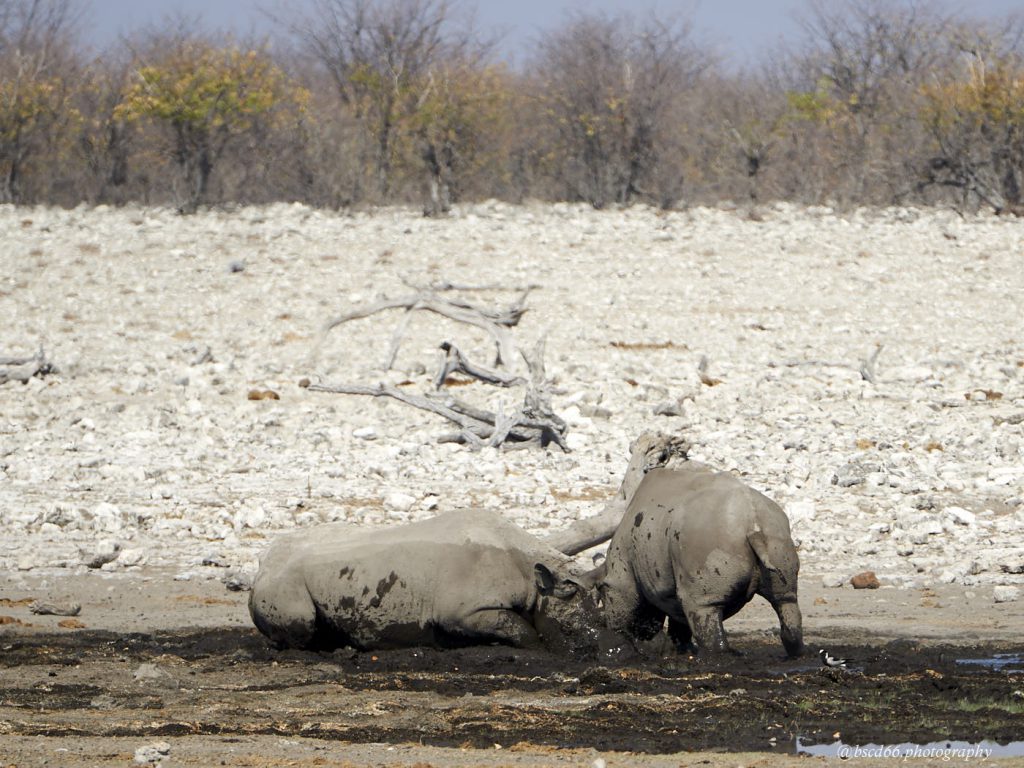
We hardly notice that an elephant cow with its two young calves of different ages enters the waterhole directly in front of us. The scurrying young bulls make way. Mother and calves drink and the little ones play in the water. Then personal care is carried out. The mud is neatly distributed over the body with the trunk, before all return to the rest of the herd, further away.
Of course, there are many other animals to be found here. Impalas, zebras, warthogs, all want to drink.
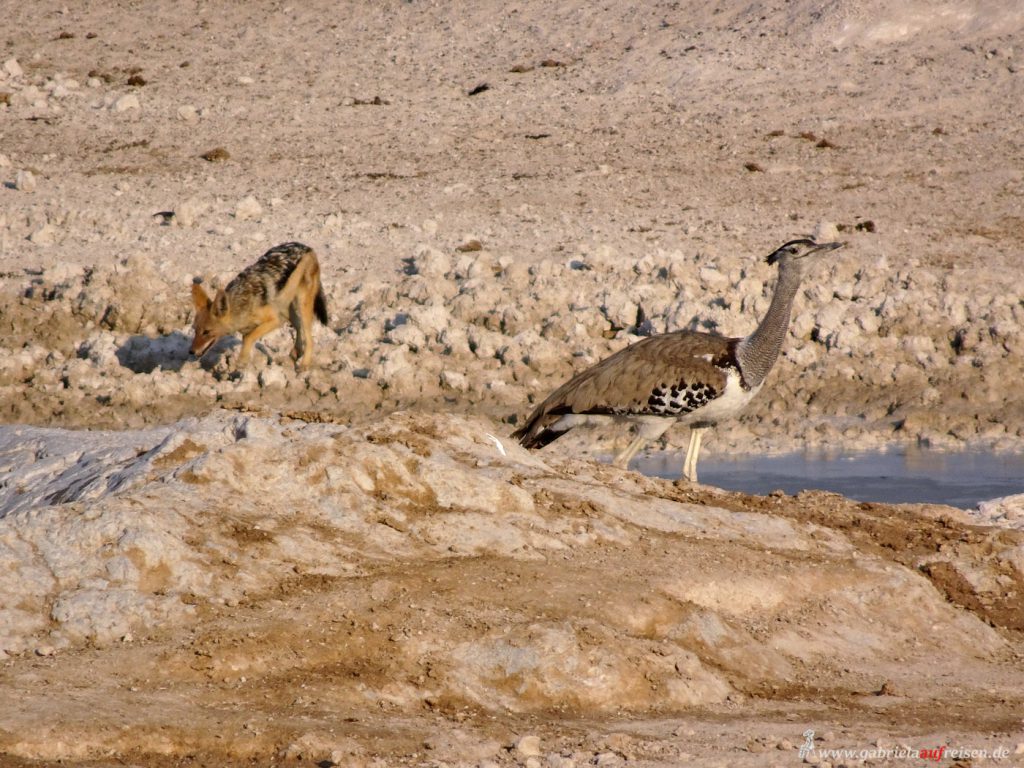
At the other water holes there is even more going on. Oryxes, jackals, wildebeest, giraffes, all want to get to the vital wet.
On the way from one hole to the next we see many animals. Some only because Jörn shows them to us with his trained eye.
There’s a rhino in the back. Do you see the elephants there between the trees? No? As an individual tourist, you miss many animals because they are so incredibly well camouflaged, no matter how large they are. In any case, we are glad that we got our bus. The windows can be opened for taking pictures.
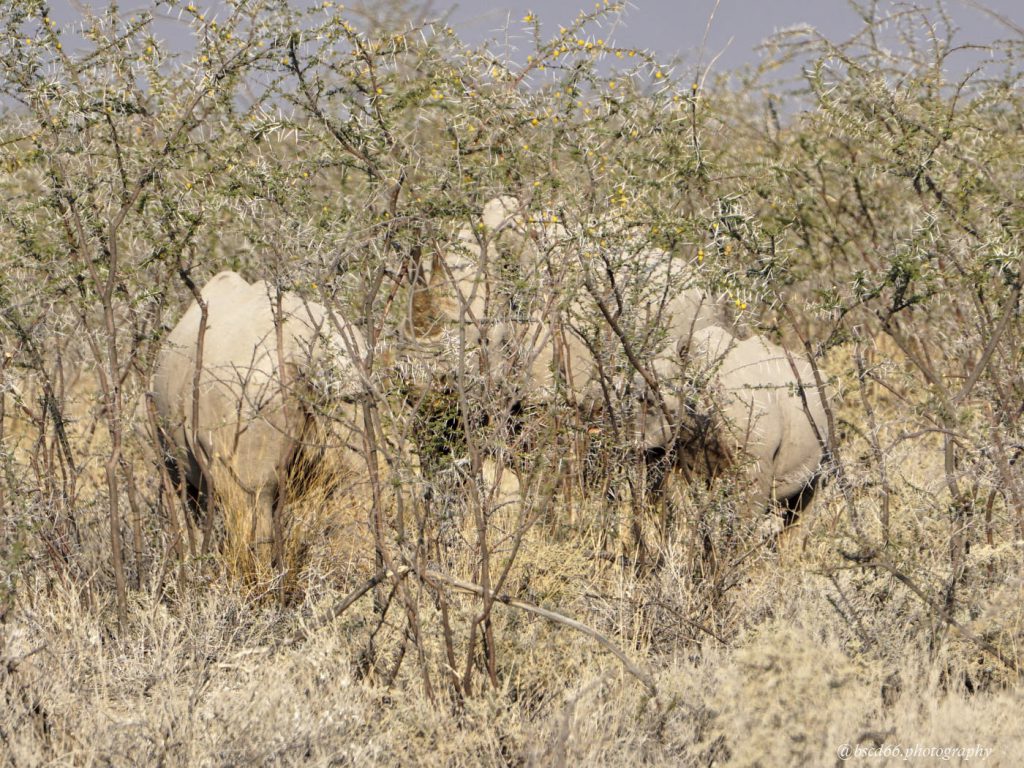
Twice we stop for the “bio-pause” in the well-secured park camps, where there are always lodges, restaurants and shops.
Then we move on. Luckily, we see three more rhinos. Two cows with a calve. We would probably have overlooked them, even though they are not far from the road in the bushes and eat. How lucky we are!
Jörn drives with us directly through the gleaming white Etosha pan, which was once a huge lake. With a good rainy season, it still can fill up.
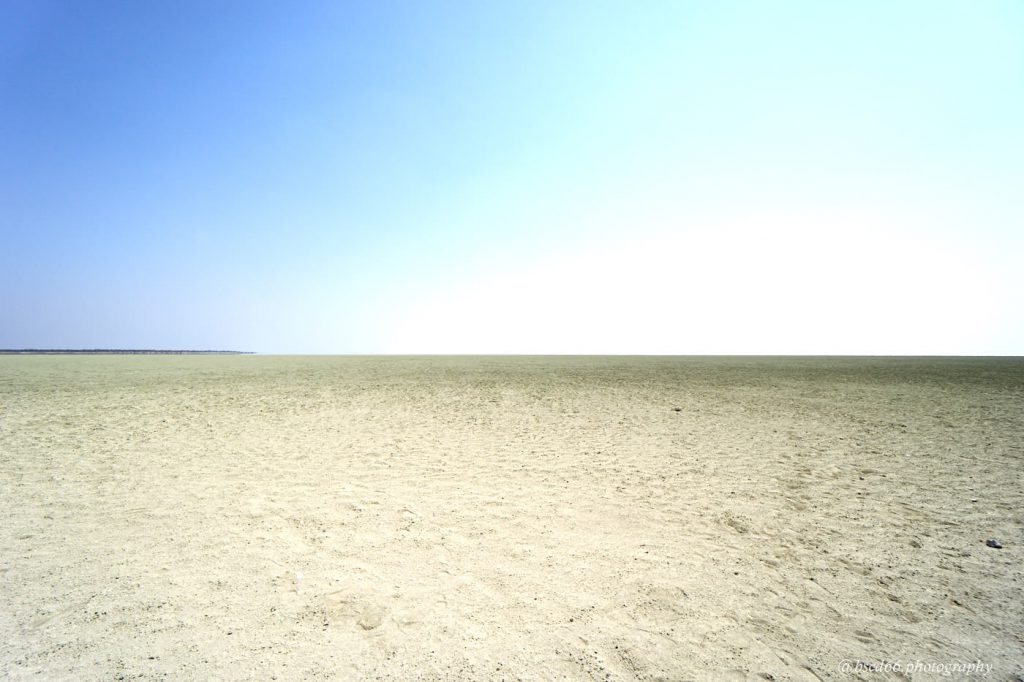
Zebra herds pass through. In brightness, they are hard to distinguish from the background. Giraffes stand out darkly from the white ground. Here and there are Impalas, with their M on the back well recognizable.
Then, unfortunately, it’s time to leave the park. Right behind the Andersson Gate we stay in the Etosha Village, a relatively large complex where the rooms are all to be foundin individual cottages.
Day 2 at Etosha National Park
Very early we leave the next morning for the pre-booked Jeep Safari. We are wearing some layers of clothes, because in the open cars it is really cold before sunrise. In addition, we get thick ponchos. This makes the jeep ride bearable. Right in front of the Andersson Gate we are far ahead in the row. The sun rises glowing red and gives us beautiful photos. Then the wild ride starts, the gate opens!
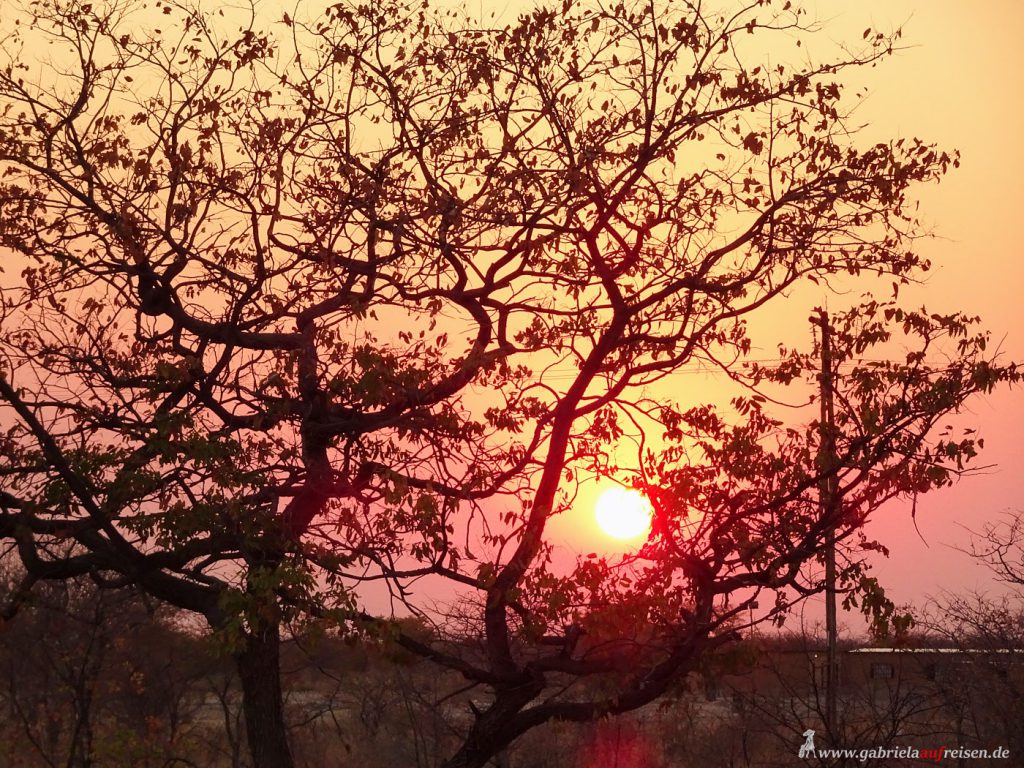
Off to the Jeep Safari in Etosha National Park
Our driver Eddy wants to go to the first camp quickly, because he has to register there and get a permit. Since they all need it and the computer in the park is out of order, it takes longer, and he doesn’t want to be the last in the queue. So, he’s rushing and we’re very grateful for the many layers of clothing.
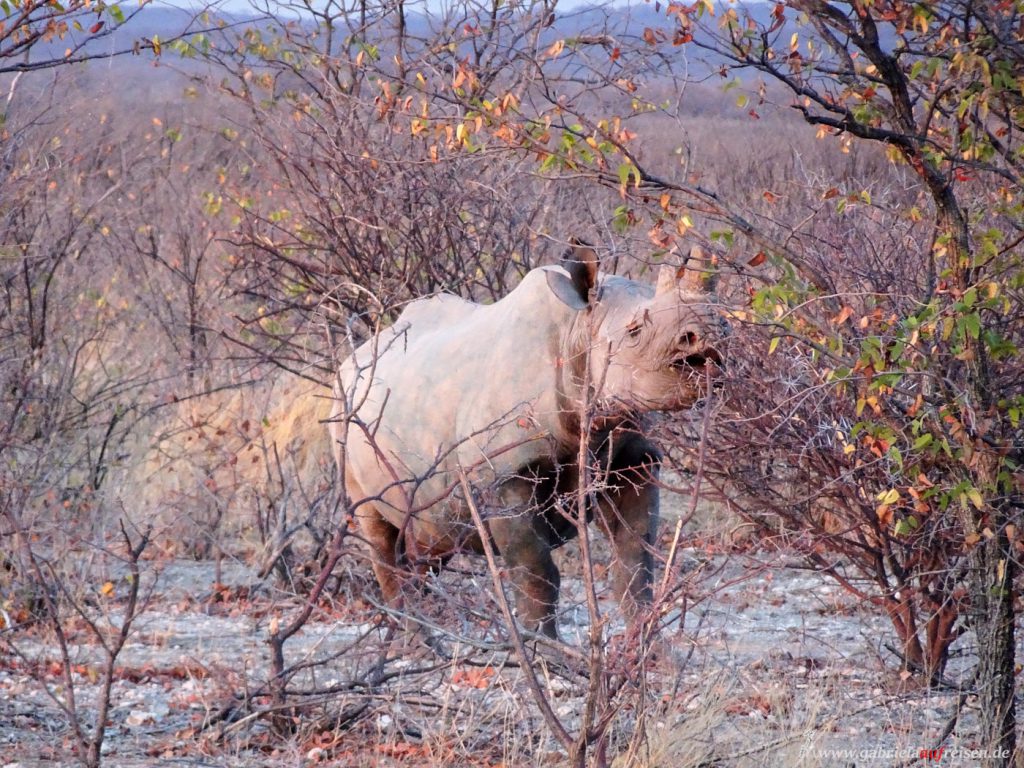
Jörn has given him the order to show his guests “cats” if possible. That is what we all want, but we know that this is not a zoo and animal sightings are not guaranteed.
Most Jeep drivers know each other and are in contact by radio. So we quickly learn that lions have been spotted. And already Eddy is rushing away with us. Quickly we are on site, where already some other jeeps have arrived.
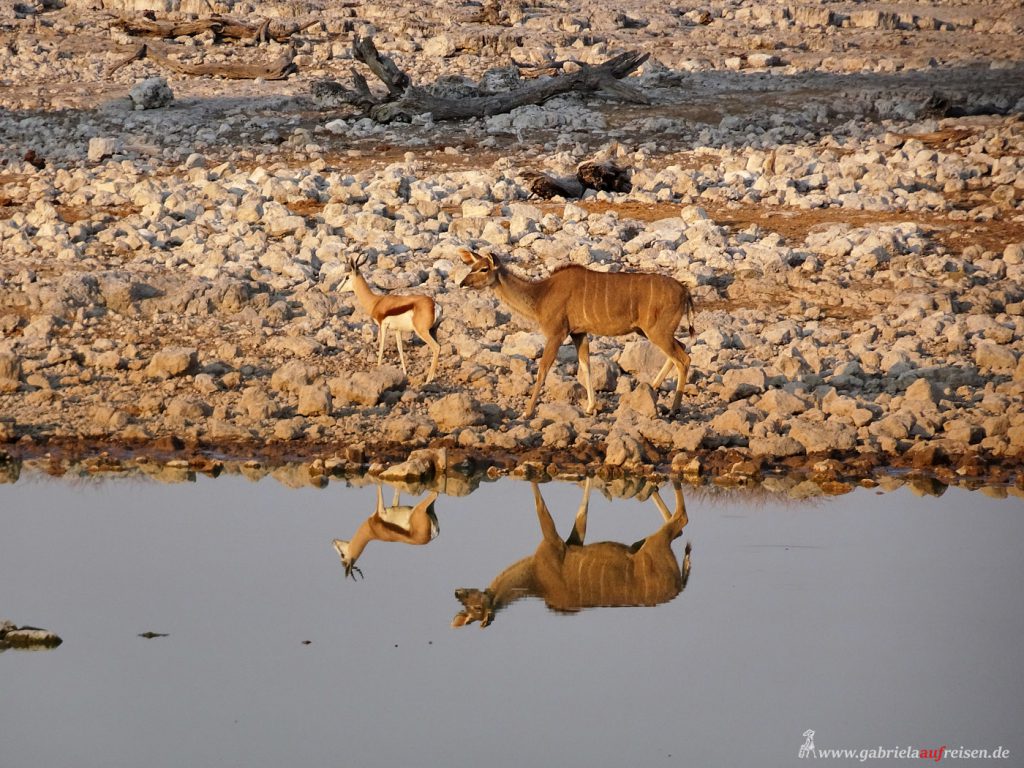
Lions
Under a tree, a couple of lions lay down to sleep. Eddy tells us that these two have come together for mating. We may have a little patience, then we can see what´s going to happen.
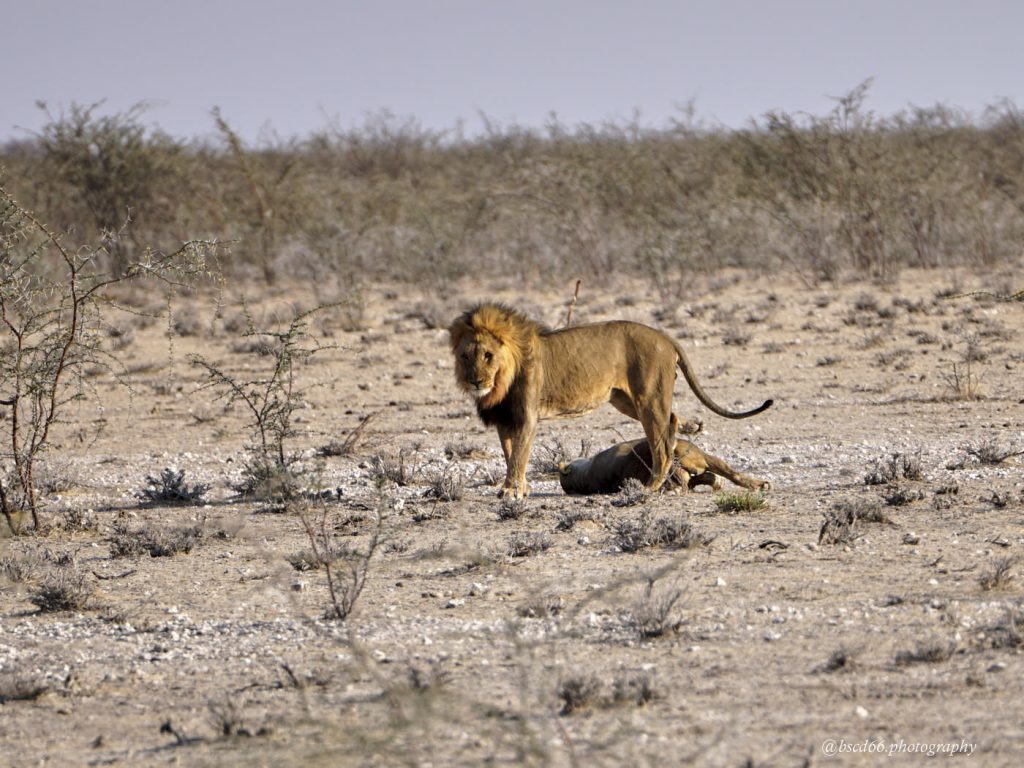
And indeed, the lioness rises from her relaxed back position and immediately the big male with the dark mane is with her. Barely three seconds the act lasts, then she snaps after him and both slump together exhausted. After about 15 minutes they continue. Eddy tells us that the two now stay together for a whole week and do nothing else all day long. They even stop eating, because there is no time for hunting.
In total, we watch the two four times during the mating act, then Eddy gets the news that cheetahs have been spotted.
Again, he’s speeding. But the animals are so fast and well camouflaged that we can’t find them. But at least some very cute ground squirrels. We’re not in a zoo…

It’s almost noon when Eddy points to a large group of trees. Whether we can see
the elephants
Can elephants be overlooked? Yes, it they can. Only their backs protrude the top of the trees just a little bit, for me it looks like the horizon. Then they move slowly. It’s a very large group. Eddy drives a little further and then it becomes clear what he is up to. He parks our jeep on the street. The elephants move slowly towards us and after a while they cross the road less than 10 meters in front of us.
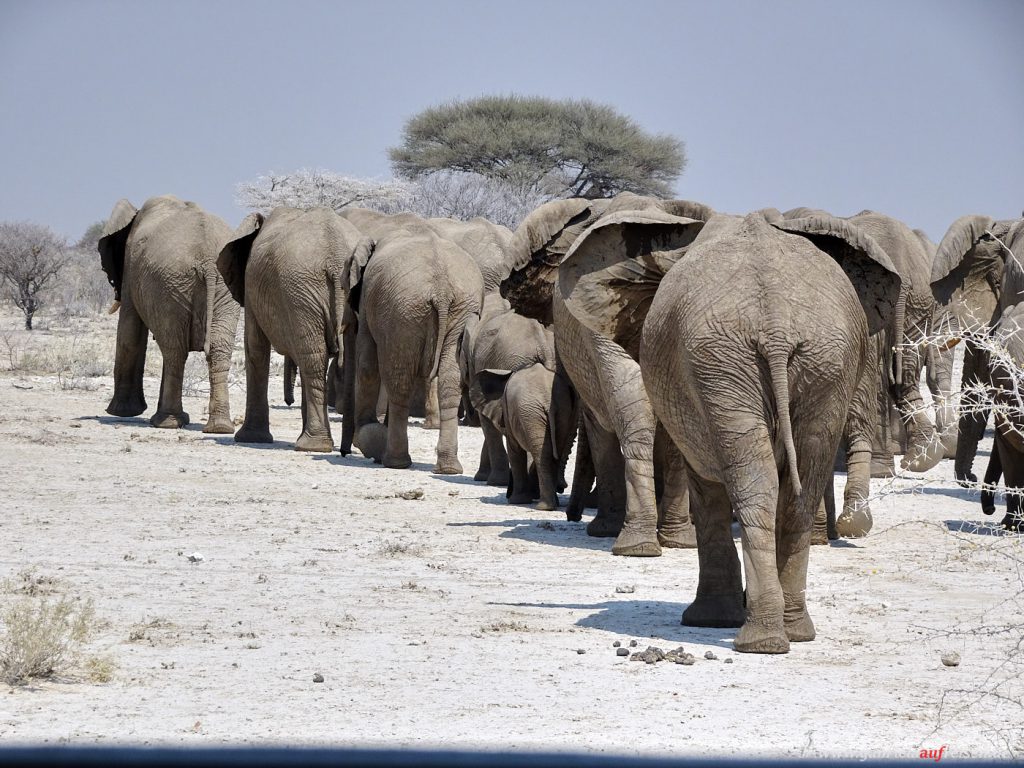
What a tremendous sight! Mothers with their young ones, who lead them closely with them, half-grown ones and the experienced elephant cows. All on their way to the next waterhole. Thirty-eight all together. An incredible sight is this and a wonderful end to our Jeep Safari.
Eddy has overrun the time for us to allow us these unforgettable moments.
A few more times we must stop to allow zebras and antelopes to cross the road.
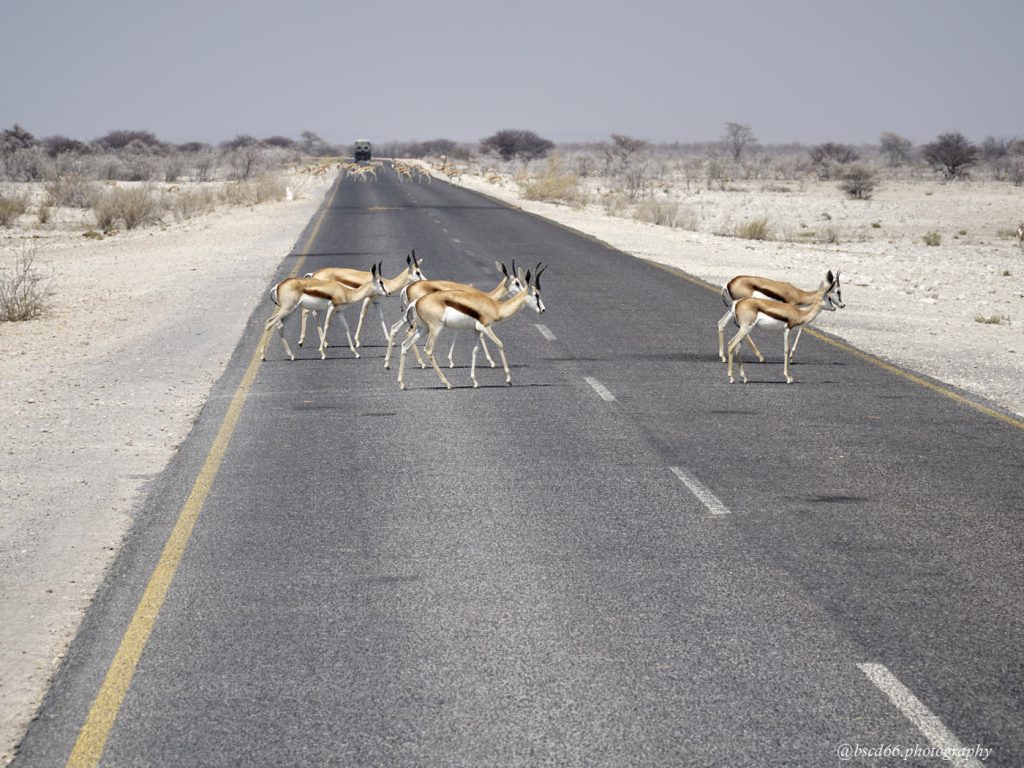
We give Eddy a decent tip and are happy that we had an experienced guide who wants to satisfy his guests. Alone we would have seen neither the lions nor the large herd of elephants in the incredible huge area of the Etosha National Park.

You want to know what happens to the “Journey of My Life”, the slogan of the tour operator Chamäleon? Then sign up for my newsletter or follow me on Facebook, Instagram, Tripadvisor or Pinterest.
I look forward to your comment!
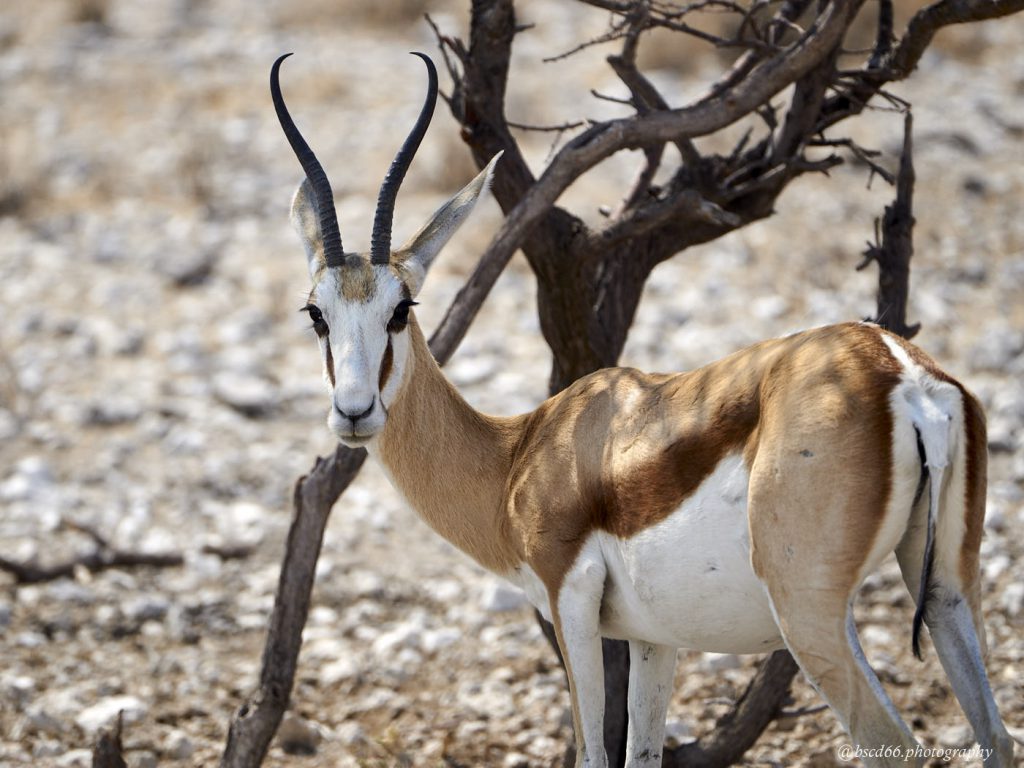
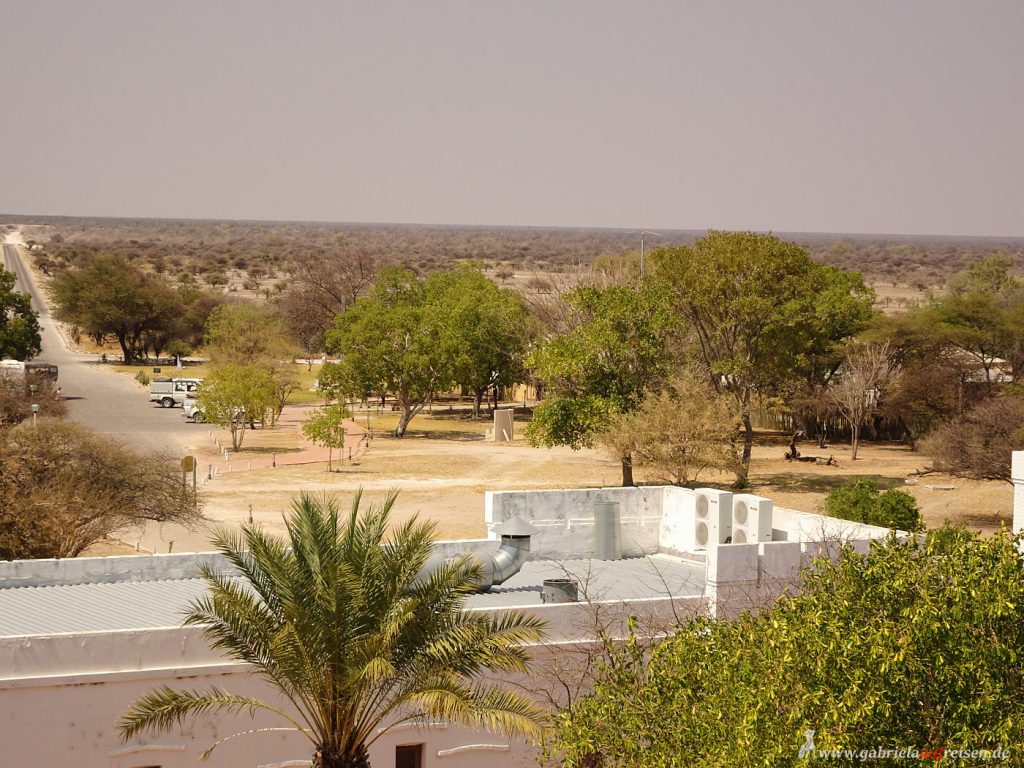
Be First to Comment